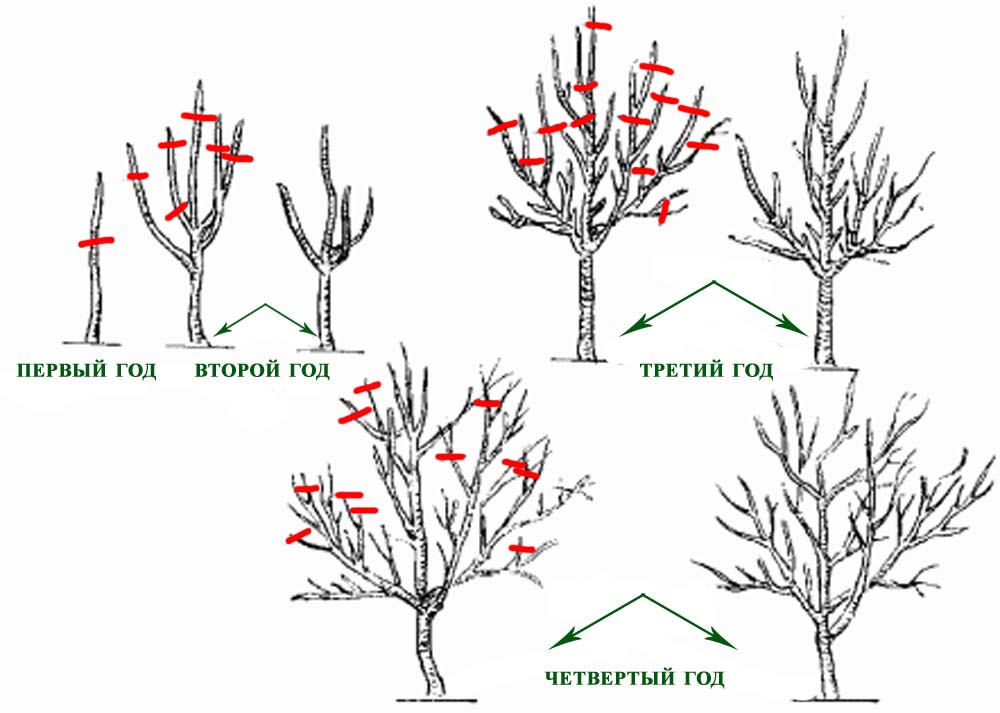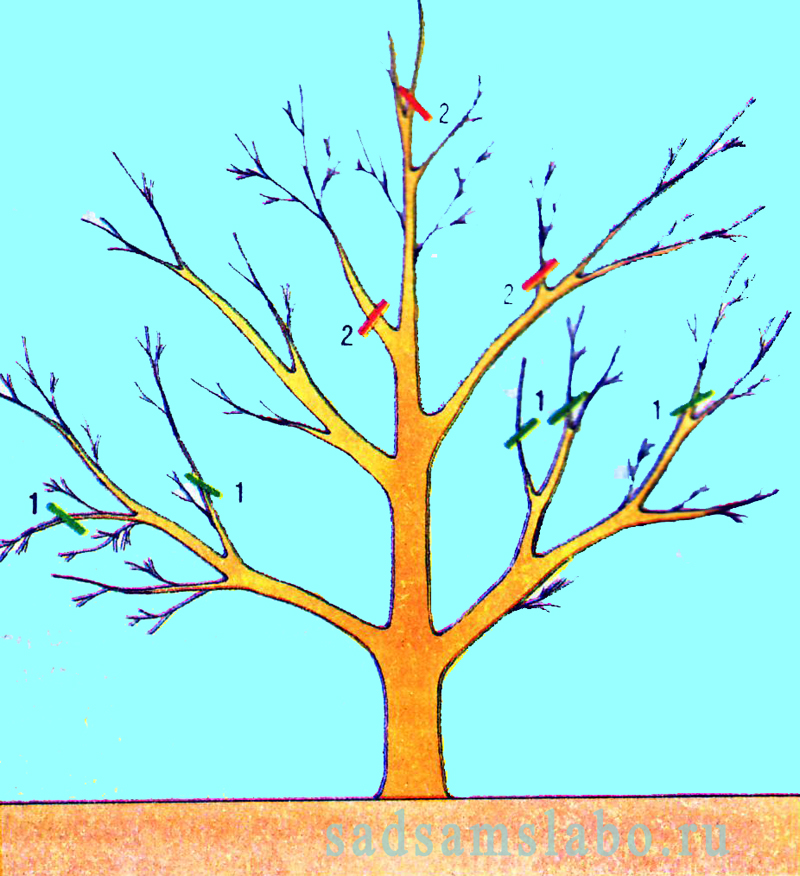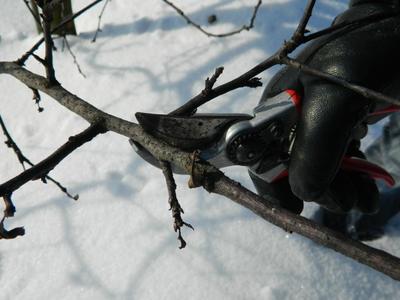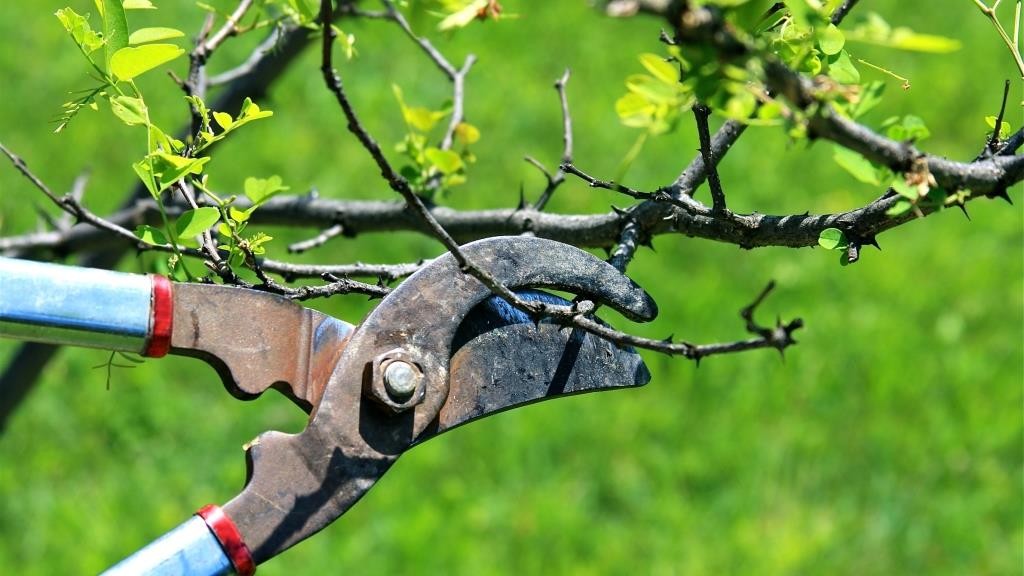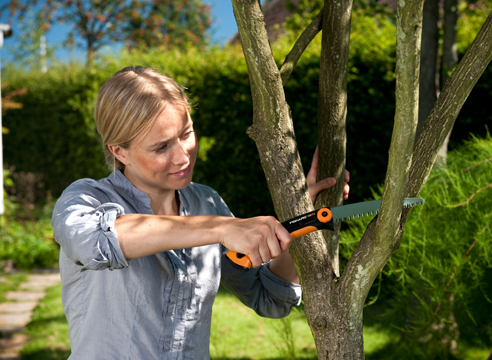Spring pruning tips for fruit trees and bushes
Content
When is the best time to trim
The period from late January to early April is considered traditional for pruning. The timing of its implementation depends on the type of vegetation and weather, which has a rather significant effect on the condition of the plants. Since weather conditions cannot be accurately predicted, it is also impossible to determine a specific date when spring pruning should begin. In different years, the time of this operation is shifted by one and a half, or even two weeks.
The main reference point in such a situation is the end of the dormant period of plants and the beginning of the movement of sap in them. Pruning should be carried out at a time when there is still no sap flow, but it is about to begin. Damage inflicted at this time is overgrown rather quickly and is the least painful for plants. Since in spring in different fruit trees the dormant period ends at different times, this makes it possible to plan this procedure.
In the regions of Central Russia, in Siberia and the Urals, it is started from the end of winter until the beginning of flowering. In the Moscow region, the optimal pruning time is the time interval from mid-March to early May. Moreover, in the north and north-west it is almost two weeks longer than in the south of the region.
Fruit trees
Trimming has different goals, depending on the situation. So for young trees in the first three to five years of life, it is spent to form the crown and stimulate its volume. Such formative pruning is designed to create a decorative, but at the same time, well-lit and easy-care crown, which speeds up the onset of flowering and increases productivity.
In the future, for mature fruit trees, regulatory pruning is carried out, which is aimed at improving the conditions of illumination of the crown and maintaining productivity. On aging plants, rejuvenating pruning should be carried out, which helps maintain growth processes, activates the formation of generative buds, and stimulates yields. It should be carried out without waiting for the extinction of the apical growth, in this case it will be possible to preserve your favorite varieties of fruit plants for a long time.
After mechanical damage to the crown, it is restored to its proper form by restoring pruning. And in the case when the branches and shoots have not been cut off for quite a long time, on such a neglected plant, this type of pruning should be done as a sanitary one.
One of the most popular fruit trees in gardens are apple trees. In the early periods of their growth, they are characterized by a tendency to strong crown thickening. In this regard, from the third year after planting, they begin to carry out shaping pruning in the spring to create a crown of the desired type. At the same time, pruning should not be very strong, since this will cause the appearance of a large number of regenerative shoots, contributing to excessive thickening.
If the apple trees have entered the fruiting period, then pruning and transfer to the lateral branches of their long branches are carried out taking into account the characteristics for each variety.So in plants of varieties with a compressed, pyramidal-shaped crown such as Parmen winter gold, Papirovka, etc. expanding the crown and pruning to external ramifications. In varieties with a drooping and spreading crown, such as Pepin's saffron, Pepin's Lithuanian, etc. pruning branches at the bend, transferring them to growing to the top.
The pear has earned the fame of a complex plant among many gardeners. Therefore, quite often her spring pruning is not carried out at all for fear of doing something wrong. As a result, such trees have a neglected appearance due to excessive overgrowth, and at the same time, the yield and quality of the fruits decrease. The pear should be pruned regularly, starting with thinning the crown and ending with shortening the shoots.
In young apricots, shaping crown pruning is carried out by shortening the long growths by one third or half. In highly branching varieties of such fruit plants, thinning is carried out. In the event that there is a weakening of the gains, anti-aging circumcisions should be done. To increase the winter resistance of flower buds, apricots are additionally pruned from May to June. In this case, premature young shoots appear, in which fruit buds do not have time to fully form and flowering is slightly delayed.
Cherry pruning is carried out in order to reduce the height and form a crown in the form of a bowl in trees. Since it has a tendency to give rather strong growths of up to one and a half meters, they must be shortened by a third or half of their length in order to improve the overgrowth with bouquet branches. It should be noted that cherries will develop well and bear fruit even without regular pruning. To stimulate the growth processes of aging trees, they are pruned for the purpose of rejuvenation, causing the growth of young shoots.
Pruning such a representative of fruit plants as a plum largely depends on the type of tree. If the varieties are characterized by an average growth of about 40 centimeters, then during cutting, the branches are only thinned out in places of thickening, but not shortened. In varieties that are weakly branching at a young age, when strong but poorly overgrown growths with lateral branches appear (for example, Anna Shpet, Skorospelka red, etc.), light shortening is carried out. This promotes the development of lateral growths and forms a compact crown. With age, when the branches begin to give weak growths of no more than 15 centimeters, they should be cut out with a transfer to young branches.
Cherries, especially non-branching annual seedlings, begin to be cut from the first year of planting. In plants up to three years old, young growth is shortened by a third or a quarter of the length in order to activate the development of lateral buds in this way. In cherry, branching off at an acute angle from the trunk of lateral branches is quite often observed. In a plant, the wood in these places is very brittle and this type of branching often breaks. Therefore, such shoots at an angle of less than twenty degrees should be cut, and others should be transferred to the lateral branch.
In quince and cherry plum, the purpose of pruning is to form a low tree or bush. Therefore, to obtain a compact crown, long growths are shortened. In cherry plum, with the beginning in the third year of fruiting, thickening is observed, in this regard, it needs to thin out the crown. On aging plants, for the purpose of rejuvenation, old branches are shortened to young strong branches.
Video "Pruning fruit in the fall"
Shrubs
In the spring, formative, regulating and rejuvenating pruning is carried out on fruit and ornamental shrubs. In this case, you should not cut off those plants in which the formation of flower buds occurs only on last year's shoots.
By cutting up to 1/3 of the branches of the total crown volume, you can significantly rejuvenate the old shrub, and increase the yield in neglected fruit plants.But in order not to greatly weaken the shrub, such an operation should be carried out in several stages.
Pruning of gooseberries and currants is carried out by thinning the bushes by cutting 5-6 summer branches to a strong lateral branching or completely, the growth of which does not exceed 15 centimeters. Drooping branches are also pruned.
In the spring of raspberries, successfully overwintered annual shoots are shortened to the first bud, which is well developed. In the rows of raspberries on a running meter, no more than 15 of the strongest shoots are left, reaching a height of at least one and a half meters. And such shrubs as flowering turf, viburnum, cercis, tree peony and irga do not require pruning at all.
Secrets of Correct Pruning
In addition to the correct timing, trimming technology also plays an important role. It is better not to cut off frozen plants in spring at all, but to postpone this procedure to the next season, when areas damaged during frost will be clearly visible.
It is important to properly prune young branches. The buds remaining on them should not be directed towards the inside of the crown, but look outward, which helps to form a beautiful and correct top. Shoots growing at an acute angle are cut into a ring. I shorten the branches up to a centimeter thick with a pruner, leaving a thorn above the bud of no more than two millimeters.
Branches thicker than 3 centimeters should be cut in two stages. First, the cut must be made from the bottom, and then cut from the top. This will help to avoid damage to the bark in the form of scoring in the event that the branch separates under its own weight during sawing.
After removing branches with diameters of more than two centimeters, to prevent the penetration of pests or pathogens and to protect against drying out, a special treatment of the cut should be done. To do this, a layer of garden varnish containing pine resin (rosin) is applied to it with a thickness of at least half a centimeter. Recently, in addition to this classic remedy, latex paints containing copper salts and artificial bark - the drug Lac Balsam, which accelerates the process of cambium formation - have also been actively used.
Video "Pruning fruit trees in spring"
To know how and when to prune fruit trees in the springtime, we recommend watching this video. The most useful tips are collected here.


